by Lynda Stevens
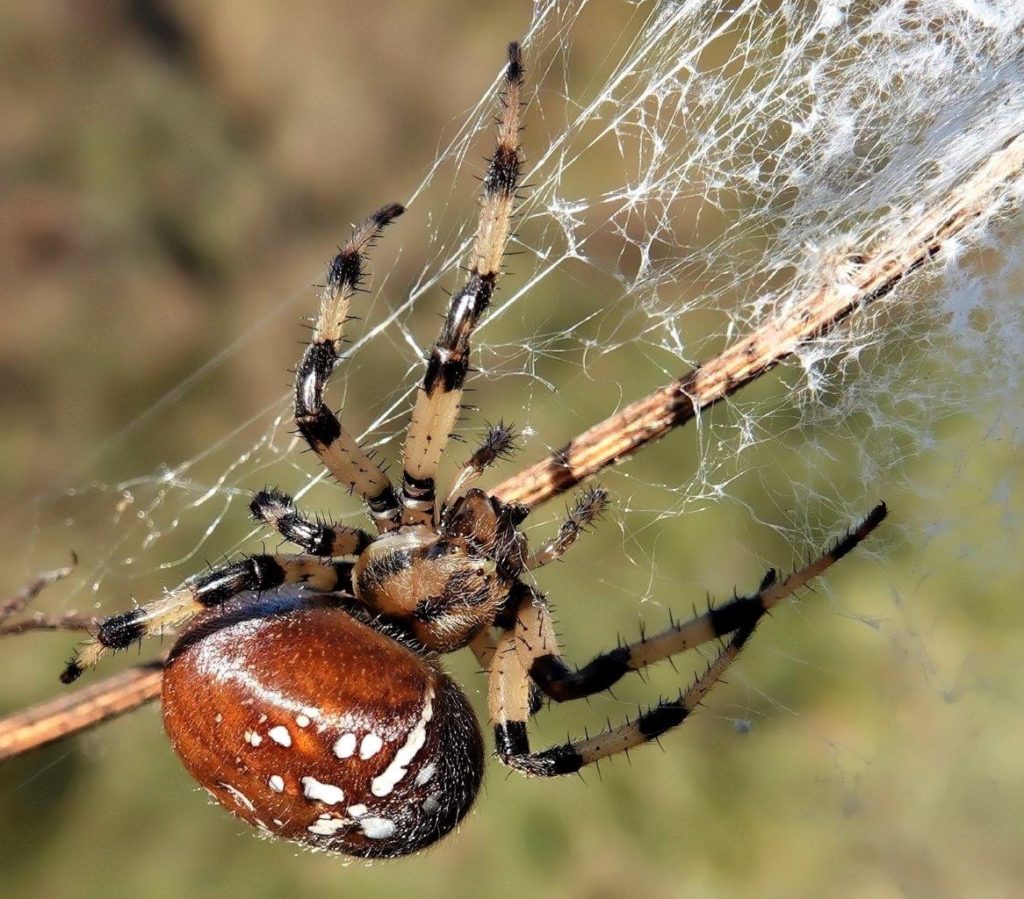
Many of you know me as an avid birder and bird photographer. This summer the birding became very quiet in mid-July and I knew that to satisfy my passion for photography I would need to find some other willing subjects. It didn’t take me long to realise that insects would be my perfect subject. Naturalists know that the world is full of interesting organisms and once I started looking for insects I was amazed at the variety that I could find on any trail in the area. Spiders are also one of these commonly encountered organisms and I soon became fascinated with trying to find as many different varieties as I could. Spiders, despite their bad reputation, are a vital part of ecosystems and are actually beneficial to humans. Many people fear spiders because they move quickly and look intimidating with their eight legs and hairy bodies, but most are harmless to humans. They are generalist predators that eat a wide variety of insects which is especially beneficial in gardens, farm fields and orchards. Spiders themselves will become food for larger spiders, insects and birds. For me, as a photographer, they had the advantage of not flying away, thus giving me a lot of opportunities to study and photograph them.
Many of the spider species are very small, and rarely observed. In fact, half of the species in North America are less than 1/8 inch in length and live near the soil surface under fallen leaves and rocks. However, there are many larger and more conspicuous species that you might encounter anywhere; in garden, parks, walking trails and buildings just to name a few. Once you start looking for them you will be surprised at how numerous and varied they are.
Many features are used to identify spiders. These include body shape and proportion, the number and arrangement of eyes, body colouration and pattern, and features of the legs such as length and the presence of hairs and spines. The task of identification is made challenging however because many species have multiple colour and pattern variations.

This photo shows a tiny spider called a Conical Orbweaver with a very unusual pointed abdomen. This body shape made it relatively easy to identity this spider but most of them are not as easy. Also the appearance of a spider changes throughout its lifetime. Young spiders can look very different from adults and female and males of the same species often look very different in both size and appearance. Males have a very short lifespan, just long enough to mate, so that most large spiders that you will encounter are probably females.
When I realised how difficult it was to correctly identify spiders right down to the species level I started using an online resource called iNaturalist to help me at least place the spider in a Family group. iNaturalist is a citizen science group where you can post a photo of your find and then other members will suggest an identification. I would then follow up their suggestions with more online research and I also found some useful books at the library. Even with all these resources accurate identification of most species requires expert observation using a microscope.
A key feature of spiders is their ability to spin silk. The silk is produced by glands in the abdomen and secreted by special finger like projections at the tip of abdomen called spinnerets. Many species produce elaborate webs with this silk which is both strong and elastic. Spider webs are distinctive of different groups and the web characteristics are used for identification.
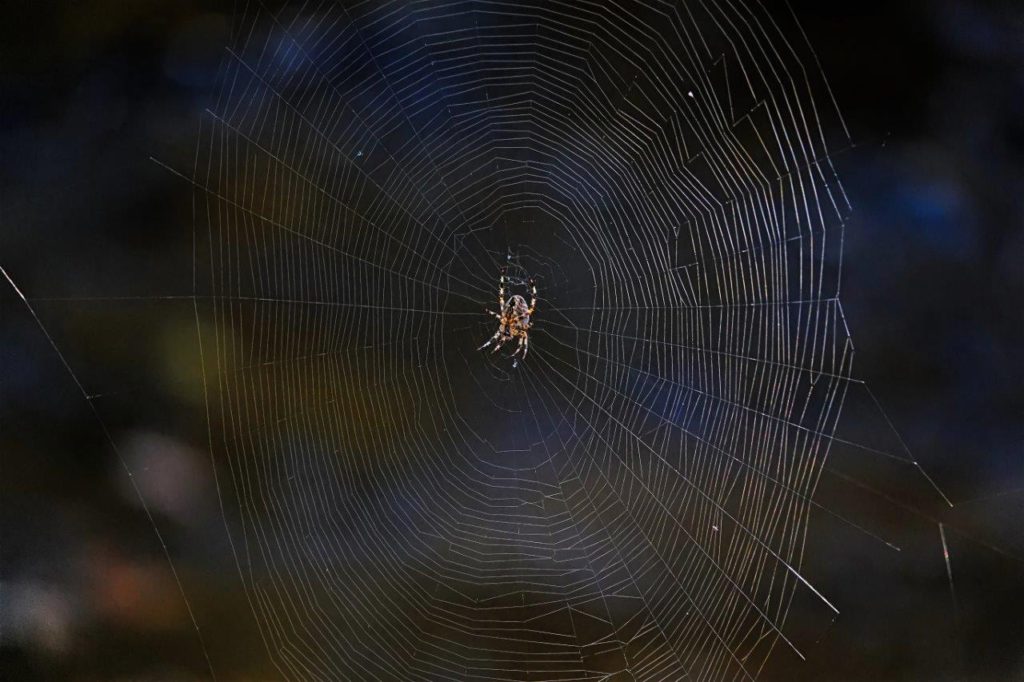
As a predator the spider uses the web to snare its prey. But another important use of silk is the production of a dragline that is played out as the spider walks. If the spider falls or attempts to flee from a predator, it can remain attached to a leaf or branch or the web by this dragline. It also uses the dragline to climb back up to the place from which it fell.
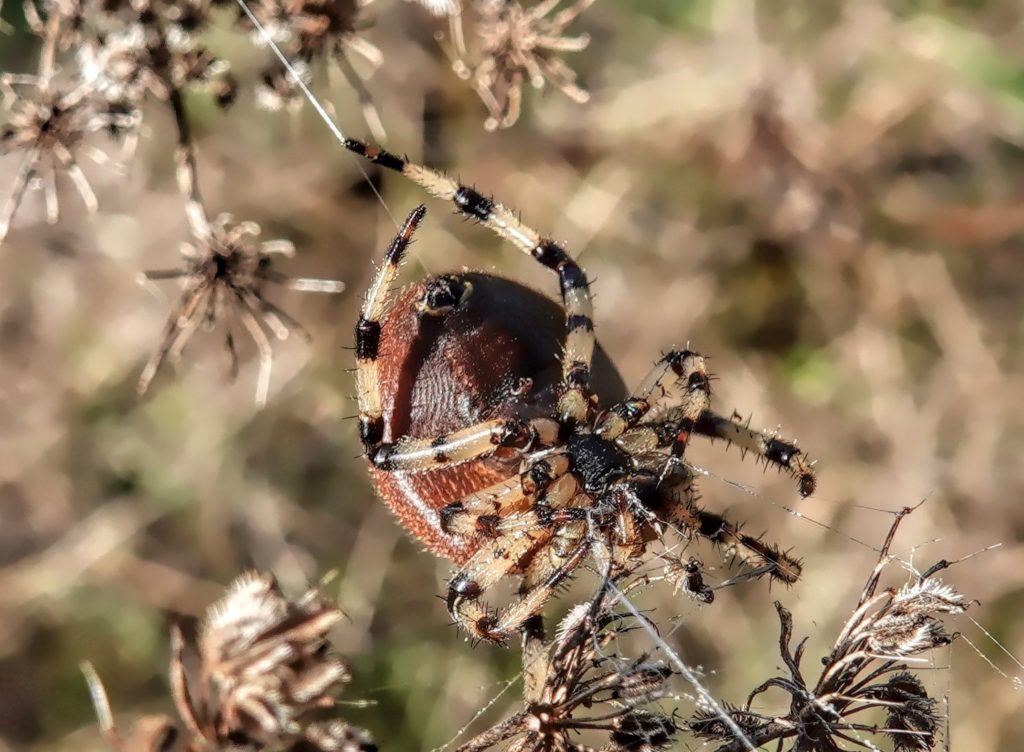
All species also use silk to construct their egg cases. One of the easiest ways to find a spider is to look for a web or silk filaments running between branches. If the spider is not in its web it is probably resting nearby in a curled leaf or under a flower. One of the most common and easiest to identify web spiders you will find in our area is the beautiful Cross Orbweaver. Near the widest part of the abdomen a series of spots form a cross-shaped mark that is present on both males and females. It produces a very distinctive vertical web and there were many of them this year at Buttertubs marsh hanging in the blackberry bushes. They are very tolerant of being observed and you can get quite close to them for a good look or a photograph.

Some spiders make a horizontal rather than vertical web and one group of these are called funnel weavers. The web is often attached to a rock face and a characteristic of these webs is the presence of a den constructed at one end of the web. The spider sits out of sight in its den and waits for prey to arrive in the web. I found one of these funnel weavers this summer on a rock wall near the Living Forest campground in south Nanaimo.
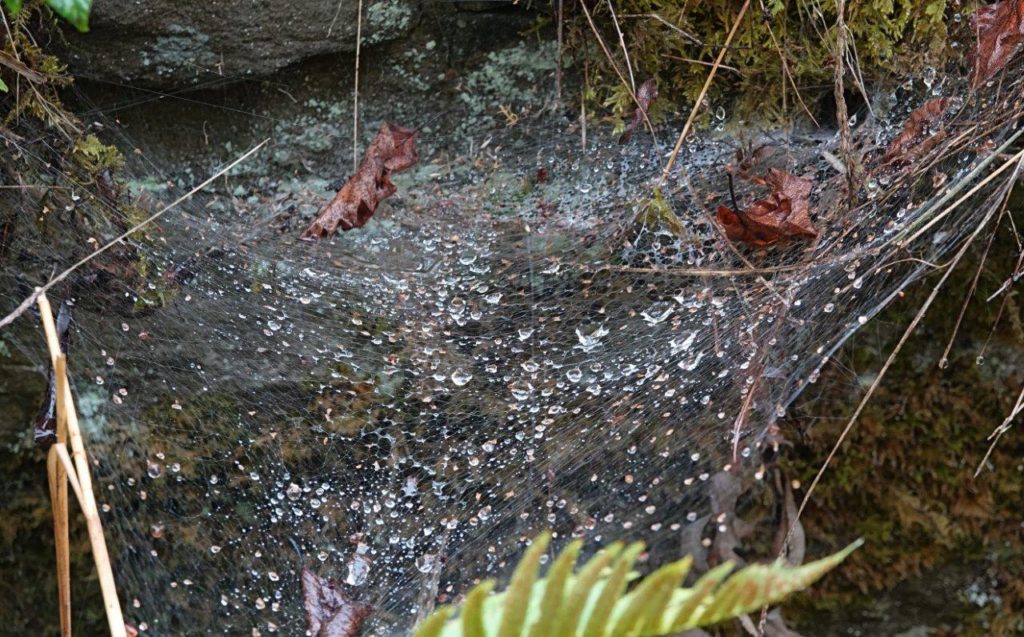
This photo shows the web after a rain and the spider is present behind a leaf near the den opening. On most of my visits to this web the spider would usually stay in or near the den. However, one time it actually came running out of its den and came right to the front, giving me a good look before retreating to the den again. I don’t know if it thought I was a really big fly or whether it was telling me to get lost and leave it alone.
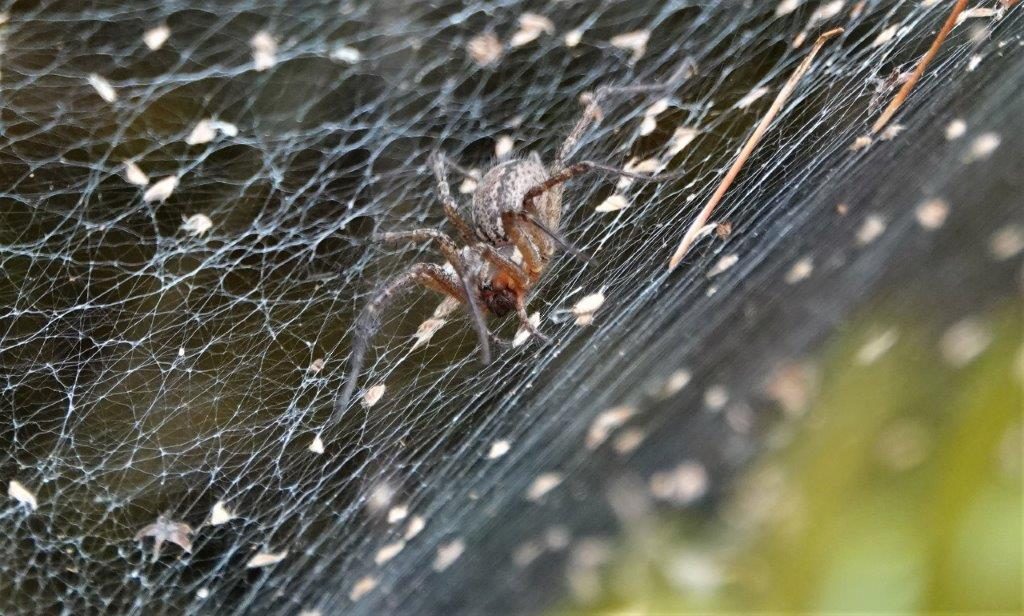
Some other species of spiders do not make webs but are ambushers. They will sit and wait patiently for prey to appear and then will pounce on them. The flower crab spider is one of these spiders that you can see easily if you take the time to check flowers such as tansy as you walk along a trail. Eventually a bee or fly or wasp will come to the flower and the spider will make its move. An interesting feature of some crab spiders is that they can change their colour to match the colour of the flower on which they are sitting.
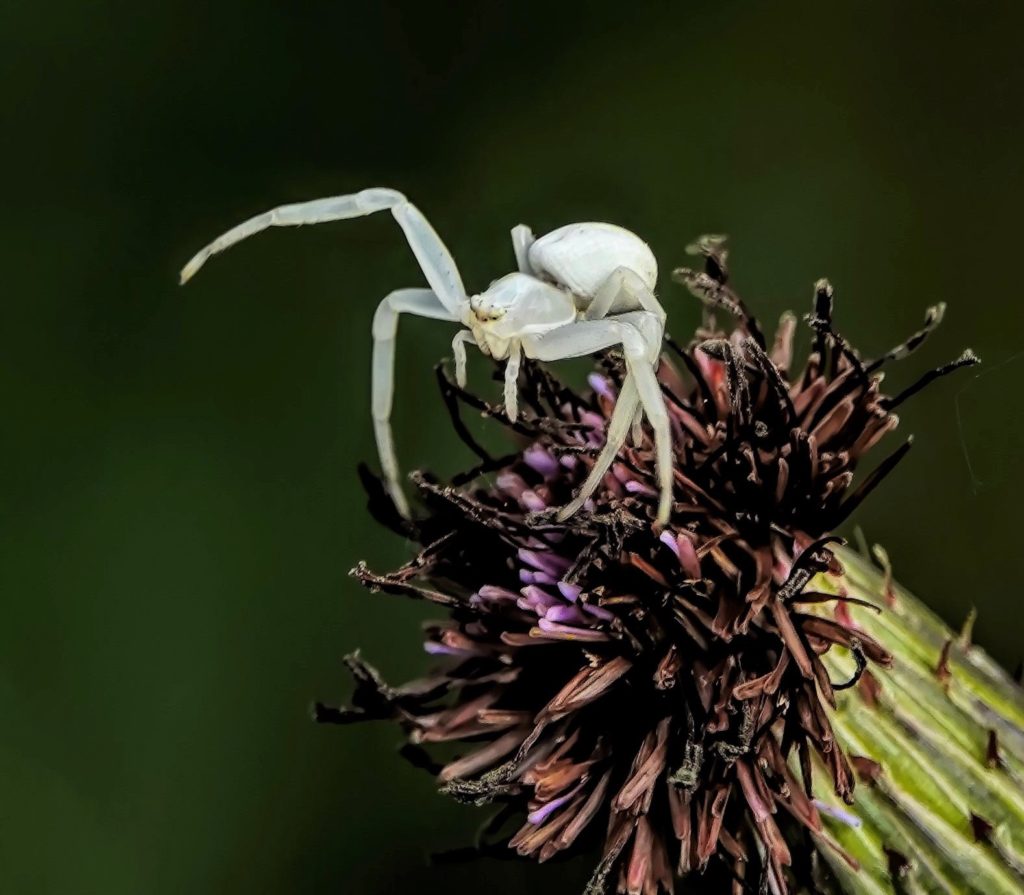
Other species are stalkers and move through the vegetation or on the ground stopping periodically to sense prey. The best know spiders that hunt in this way are the jumping spiders. Jumping spiders are a favourite of mine because two of their eight eyes are very large and forward facing giving them a very human appearance. Jumping spiders will often turn and stare right back at an observer for a quite a while before scurrying for cover. Jumping spiders, however, can be very small and well camouflaged and it does take some practice to find them. But getting face to face with one of these is worth the effort. On a couple of occasions these spiders lived up to their name by deciding to get involved in the photography and jumping on my camera or on my hand. They don’t stay long once they realise that they have left the safety of the plant but it is always fun to have such a close encounter.
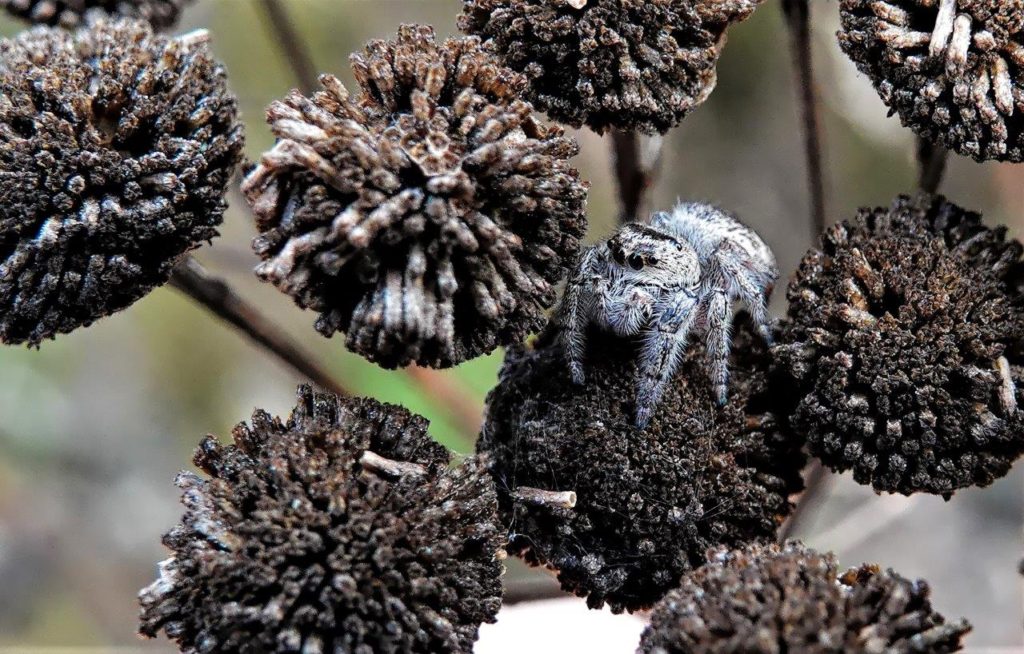
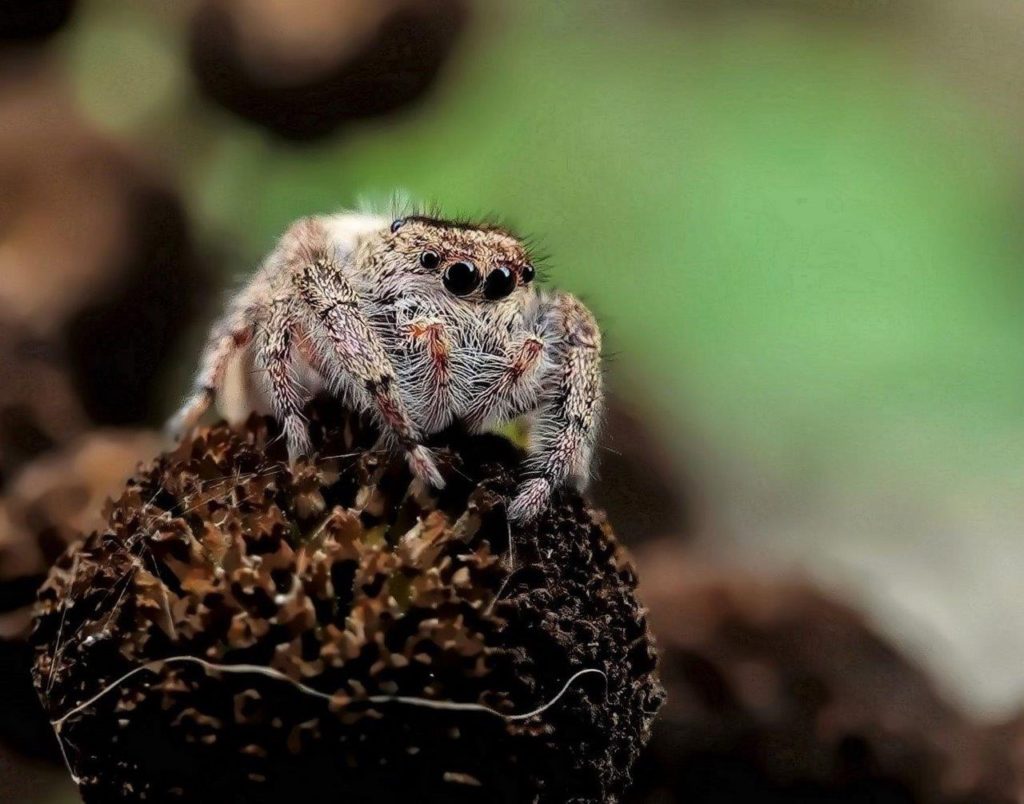
I hope that you now have a better appreciation of spiders and will take the time to look for them when you are out walking in one of our parks. If you take a photograph you can become part of iNaturalist and add to the database of knowledge about which spiders are found in our region.
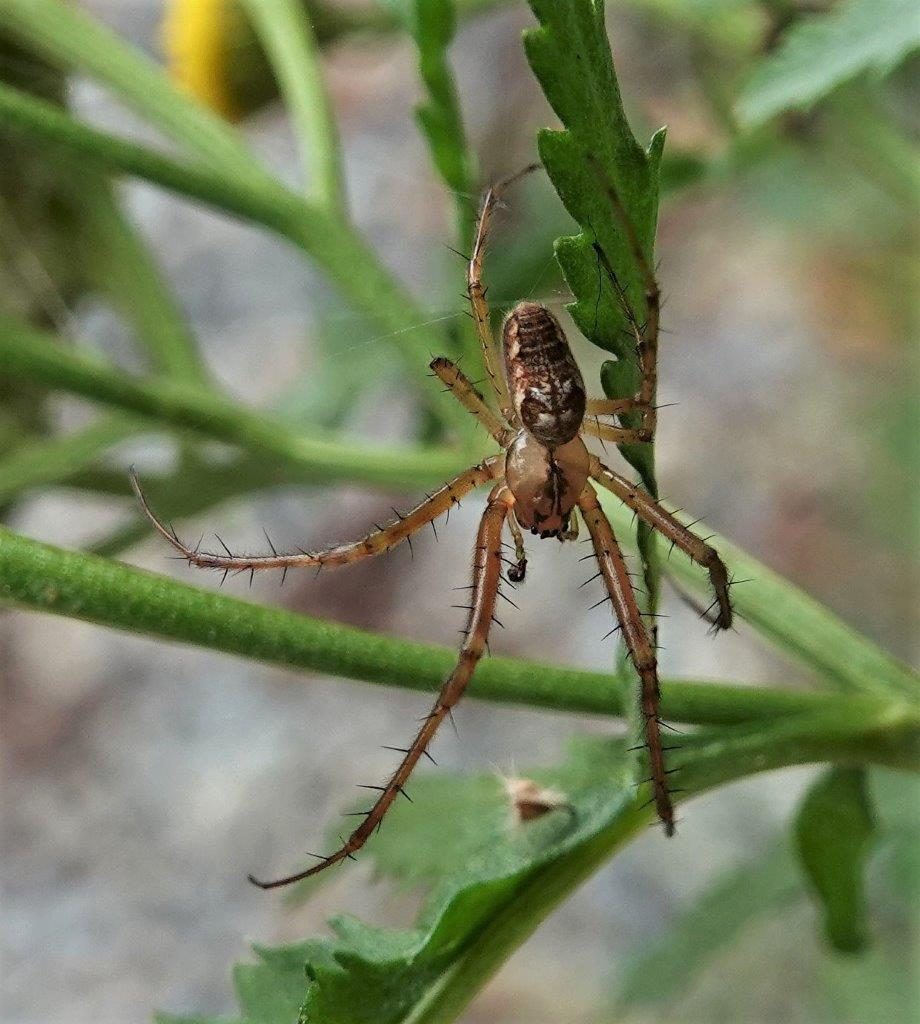
Reference:
Bradley, Richard. 2013. Common Spiders of North America, University of California Press, 217pp.
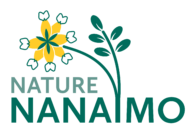
Stunning photos ( as always) and an interesting and engaging write up. Bravo Lynda and thank you for sharing and enriching our lives.
Thanks Nuria. I enjoy being able to put my photos to good use.
Lynda
Fantastic, Lynda! Thanks for introducing me to this fascinating world – this (as well as all your wonderful birds) is definitely your niche. You take amazing photos!
wonderful photos and write up Lynda!!!! Spiders are all special but those jumping spiders are particularly adorable looking 🙂